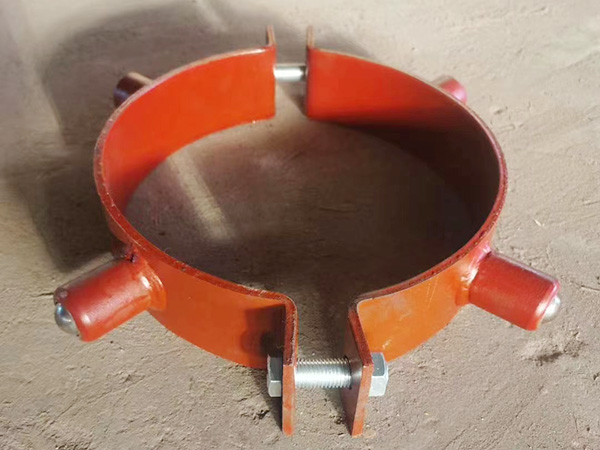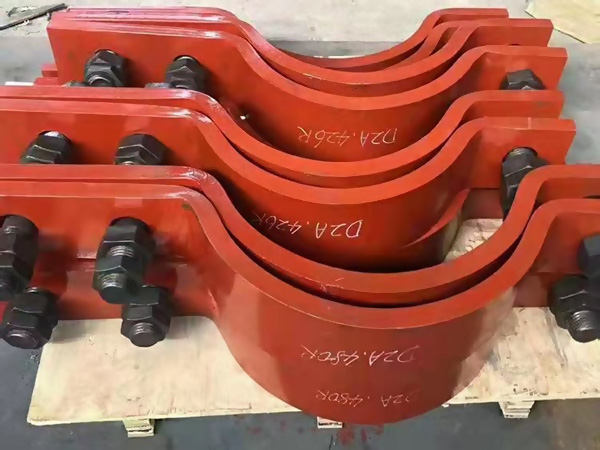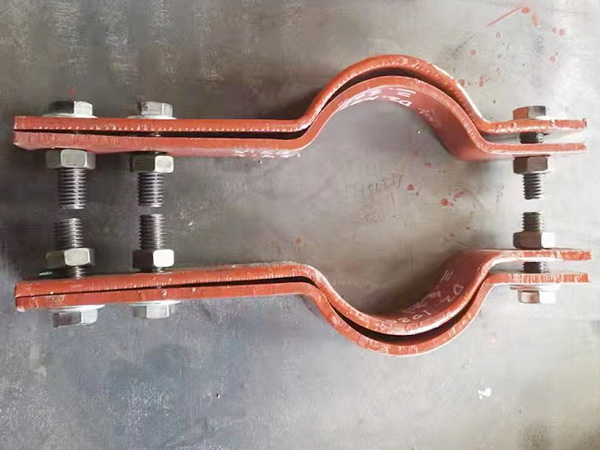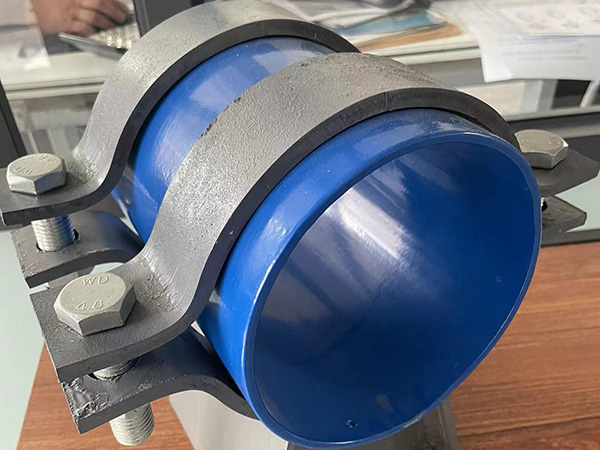How Pipe Support Systems Reduce Vibration and Noise
Author:Mingde Time:2025-11-12 15:37:38 Click:192
Stable Pipes, Quieter Systems
Every modern piping network, from industrial plants to HVAC systems, faces one universal challenge — vibration and noise. As fluids move under pressure, mechanical forces can create resonance that shakes components, wears out joints, and generates unwanted sound.
A well-engineered pipe support system can significantly reduce these issues. By anchoring, isolating, and guiding pipelines properly, supports ensure that the system operates safely, quietly, and efficiently. As a professional pipe support manufacturer with mass production and bulk supply capacity, we understand the direct relationship between good support design and overall system performance.


1. The Hidden Problem of Pipe Vibration
Vibration might seem minor at first, but its long-term impact can be severe. Continuous oscillation can cause fatigue cracks, loosen bolts, and create alignment problems in connected equipment. It can also amplify sound levels, leading to disruptive noise in nearby spaces.
Pipe support systems are designed to control these movements by holding pipes firmly in place while still allowing for controlled thermal expansion. The right combination of supports prevents stress concentration and helps maintain a smooth operational flow.
2. What Makes Pipe Supports Essential
Pipe supports are structural elements that carry the weight of the piping, manage load distribution, and limit motion during operation. A complete system usually includes:
Hangers to suspend pipes and absorb vertical loads.
Clamps and saddles to secure pipes and reduce vibration.
Guides and anchors to restrict directional movement.
Springs and dampers to balance flexibility and stability.
Together, these components maintain system alignment and minimize dynamic stress — a foundation of every efficient piping design.
3. How Proper Supports Reduce Vibration
An effective pipe support system works by isolating vibration energy rather than transmitting it. Methods include:
Flexible isolators made from rubber or composite materials that cushion mechanical impact.
Spring assemblies that allow limited movement without overloading the pipe.
Dampers that dissipate kinetic energy through friction or viscous materials.
Optimized support spacing that prevents harmonic resonance along long pipe runs.
By controlling vibration at its source, noise is naturally reduced — improving both performance and comfort in industrial and residential applications.
4. Noise Reduction through Smart Support Design
Noise and vibration are inseparable. The same motion that causes metal fatigue also transmits sound through the building’s structure. When pipes are poorly supported, even small vibrations can radiate as loud mechanical noise.
Installing vibration-isolating pipe support systems acts as a barrier between moving components and structural surfaces. This not only reduces acoustic transmission but also enhances the overall durability of the piping network. For environments such as hospitals, laboratories, and office buildings, this improvement is particularly valuable.
5. Frequent Installation Errors to Avoid
Many vibration or noise problems result from improper installation rather than defective supports. Common mistakes include:
Placing supports too far apart, allowing excessive sagging.
Over-tightening clamps, which prevents thermal expansion.
Ignoring movement allowances in long horizontal runs.
Using rigid supports in areas that need flexibility.
Consulting with a qualified pipe support manufacturer ensures that spacing, materials, and load requirements meet engineering standards from the start.
6. Materials and Production Quality Matter
The performance of a support depends heavily on its material and manufacturing precision. Typical materials include:
Carbon steel: For general-purpose installations and cost efficiency.
Stainless steel: For corrosion resistance in humid or chemical environments.
Composite and rubber-lined steel: For high vibration and noise control.
A manufacturer with advanced production capability can provide consistent quality and adapt support materials to match system temperature, pressure, and environmental demands. This customization ensures long service life even under extreme operating conditions.
7. Regular Inspection: The Key to Long-Term Stability
Even the best pipe support systems require periodic checks. Over time, vibration isolators wear out, bolts loosen, and metal parts may corrode. Regular inspection helps identify:
Signs of fatigue or deformation
Corrosion around joints or fasteners
Loose hardware or damaged clamps
Loss of elasticity in isolating materials
Routine maintenance protects the pipeline’s integrity and keeps vibration and noise levels under control.
8. Why Work with a Reliable Pipe Support Manufacturer
For engineering projects that demand precision and scalability, partnering with a pipe support manufacturer that offers large-scale production and bulk delivery brings multiple benefits:
Uniform product quality
Consistent availability for big projects
Technical support and customization
Reduced procurement cost through direct factory supply
By working directly with manufacturers, engineers can achieve both mechanical performance and cost optimization in their designs.
Conclusion: Quiet Strength Comes from Solid Support
The effectiveness of a piping system depends not only on its materials or layout but also on how it is supported. Quality pipe support systems absorb vibration, prevent damage, and cut down noise transmission, resulting in safer and quieter operation.
Choosing a manufacturer with strong production capability ensures access to durable, precision-made supports designed to meet your project’s vibration control needs. In the long term, stable supports mean longer equipment life, improved safety, and better overall performance.
References
GB/T 7714:Tripathi R, Jadhav T A, Gaikwad M K, et al. Vibration analysis of piping connected with shipboard equipment[J]. Frontiers in Mechanical Engineering, 2024, 10: 1396170.
MLA:Tripathi, Radharaman, et al. "Vibration analysis of piping connected with shipboard equipment." Frontiers in Mechanical Engineering 10 (2024): 1396170.
APA:Tripathi, R., Jadhav, T. A., Gaikwad, M. K., Naidu, M. J., Gawand, A. B., Kaya, D., ... & Abouel Nasr, E. (2024). Vibration analysis of piping connected with shipboard equipment. Frontiers in Mechanical Engineering, 10, 1396170.
 Hot Products
Hot Products
 Contact Us
Contact Us
Contact:
Mobile:+86 +86 19133378808
Website:mingdepipe.com
Address:










